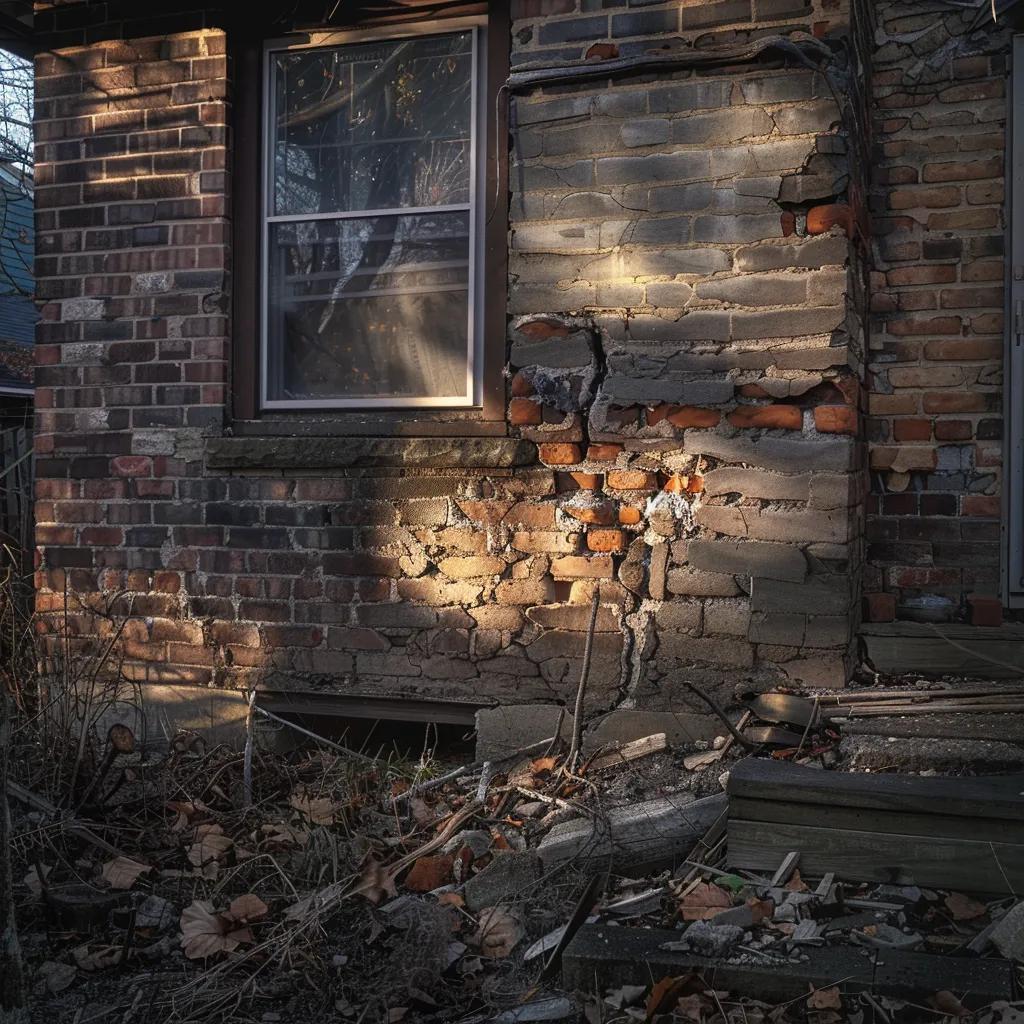How Foundation Problems Affect Your Home’s Value
Foundation issues are among the most critical concerns for homeowners because they can create safety hazards and diminish property value. A home’s foundation ensures structural stability; when it fails, problems such as uneven floors, cracked walls, or compromised support for the roof and chimney may occur. These issues can significantly depreciate property value and lead to high repair costs. This article examines the financial impact of unaddressed foundation issues, outlines warning signs of needed repairs, discusses how buyers and lenders view such problems, reviews common causes of foundation damage, and explains repair methods that can restore or even increase home value.
How Neglected Foundation Issues Reduce Your Home’s Market ValueFoundation Issues on Property Worth
Neglected foundation problems rapidly decrease a home’s market value. Property value drops immediately through visible defects and later due to compounded repair costs and reduced buyer confidence.
Calculating the Percentage Decrease in Home Value Due to Foundation Flaws
Even minor foundation issues can reduce a property’s market value by 10% to 15%. For instance, a home valued at $300,000 might lose $30,000 to $45,000 if foundation problems are evident. Precise figures require professional appraisals and detailed inspection reports.
Comparing Repair Costs Versus Potential Value Loss
While foundation repair costs can range from $5,000 to over $50,000, early intervention is often more cost-effective. Investing in professional repair can lead to a higher sale price and provides peace of mind about the structure’s safety.
Understanding How Lenders View Homes With Foundation Damage
Lenders are cautious about properties with foundation issues. Many require a professional inspection before financing, and some may lower the loan-to-value ratio or demand repairs prior to loan approval. Homes with unresolved issues may even be deemed unfinanceable, reducing market appeal.
The Difficulty in Selling a Home With Known Foundation Defects
Selling a home with foundation defects is challenging. Buyers typically request significant price reductions or repairs, prolonging the selling process and increasing negotiation difficulties. Visible foundation issues are clear red flags that can lead to cancelled offers or lower bids.
Long-Term Financial Consequences of Neglecting Foundation Repairs
Over time, foundation movement can cause additional interior damage, such as cracked walls and broken tiles, which further increase repair costs. Neglected issues may also lead to higher insurance premiums and unexpected expenses, making the overall restoration far more costly than early intervention.
Recognizing Telltale Signs Your Home Needs Foundation Repair
Early detection of foundation problems is critical for minimizing damage and repair costs. Homeowners should be alert to subtle indicators that may require professional evaluation.
Identifying Cracks in Walls and Floors That Signal Foundation Trouble
Initial signs of foundation issues are cracks in walls and floors. Hairline cracks may be normal in older homes; however, progressive or widening gaps—especially near load-bearing walls or along the foundation—suggest significant structural movement.
Noticing Sticking Doors and Windows as Indicators of Foundation Shifts
If doors and windows start sticking or fail to close smoothly, the shifting foundation may be distorting frames and doorways. Such misalignments often require both structural repair and adjustments to the affected installations.
Observing Uneven or Sloping Floors Within Your Home
Uneven or sloping floors can indicate stress on the foundation. This issue may affect furniture alignment and overall comfort. A professional assessment can help determine if poor soil conditions or gradual foundationsettling is worsening the problem.
Spotting Gaps Around Window Frames or Exterior Doors
Gaps between window frames or exterior doors and the home’s structure can signal foundation movement. Such misalignment not only affects energy efficiency by allowing drafts but also indicates potential structural instability that should be inspected.
Detecting a Leaning Chimney as a Sign of Foundation Movement
A gradually leaning chimney is a clear sign of foundation instability. When the foundation shifts, the support for the chimney weakens, leading to a tilted structure. Prompt professional evaluation is essential to prevent further damage and ensure overall safety.
How Foundation Stability Influences Buyer Perception and Offers
The condition of a home’s foundation plays a significant role in shaping buyer confidence. A stable foundation enhances a property’s market appeal, while visible issues can complicate negotiations.
The Role of Pre-Sale Foundation Inspections in Buyer Confidence
Pre-sale foundation inspections are increasingly common as they give buyers an objective look at a home’s structural integrity. A clear inspection report reassures buyers and can help streamline negotiations by clarifying future maintenance needs.
Negotiating Power Shifts When Foundation Problems Are Present
When foundation defects are known, buyers gain negotiating power. They may negotiate lower prices or demand thorough repairs, making it crucial for sellers to address issues and document repairs to maintain a stronger selling position.
Buyer Wariness Regarding Future Repair Costs and Complications
Buyers worry about potential future expenses related to foundation repairs. The possibility of additional structural damage can make them hesitant, so proactive repair and transparent documentation build confidence and improve marketability.
Impact on Curb Appeal and First Impressions of the Property
Visible foundation issues—such as sagging porches, misaligned windows, or a leaning chimney—negatively influence curb appeal. An attractive, well-maintained exterior is key to making a good first impression and generating buyer interest.
Importance of Transparency and Disclosure of Foundation Issues
Full disclosure of foundation problems is essential during the selling process. Transparent communication and detailed repair records foster trust with potential buyers and help avoid legal complications later on.
Common Causes of Foundation Damage That Depreciate Home Value
Several factors, both natural and man-made, can weaken a home’s foundation if not properly managed.
Soil Expansion and Contraction Effects on Foundation Integrity
Clay soils are prone to expansion when wet and contraction when dry. This natural swelling and shrinking place stress on foundations, leading to cracks and shifts. Homeowners in regions with variable climates should monitor soil conditions closely and consider corrective reinforcement when necessary.
Poor Site Drainage Leading to Foundation Weakening
Inadequate drainage allows water to collect around the foundation, eroding supportive soil over time. Persistent moisture can soften the soil and cause the foundation to shift, underscoring the importance of proper landscaping and downspout management.
Plumbing Leaks Undermining Foundation Support
Even minor plumbing leaks can saturate the soil near the foundation, accelerating erosion and decomposition. Regular inspection and prompt repair of leaks are essential to maintain foundation integrity and avoid severe damage.
Tree Root Intrusion Causing Foundation Cracks and Shifts
Trees planted too close to a home can have roots that penetrate and disturb the foundation. Over time, this pressure can result in cracks and structural shifts. Homeowners should evaluate landscaping to ensure trees are at a safe distance or protected with barriers if necessary.
Inadequate Initial Construction and Compaction Practices
Poor initial construction, such as inadequate soil compaction or substandard materials, can predispose a home to early foundation problems. Deficiencies present from the start tend to emerge over time, reducing both durability and resale value.
Repairing Foundation Problems to Restore or Increase Home Value
Timely and professional foundation repairs not only restore lost value but can also enhance a property’s appeal. Several effective repair methods are available, each addressing specific issues.
Benefits of Addressing Foundation Issues Before Listing Your Home
Repairing foundation problems before selling provides immediate financial benefits. Professional repairs improve structural integrity and increase buyer confidence, reducing the likelihood of low-ball offers and protracted negotiations.
Understanding Different Foundation Repair Methods and Their Effectiveness
Key repair techniques include underpinning, slab jacking, and the use of piers. Underpinning extends support into stable soil layers, while slab jacking lifts a sunken slab with specialized equipment. Homeowners should consult foundation experts to determine which method best suits their needs.
The Value of Transferable Warranties for Foundation Repairs
Transferable warranties on repair work reassure future buyers that the issue has been professionally resolved. These warranties serve as valuable negotiating tools, often helping owners secure a higher sale price.
How Documented Repairs Can Reassure Potential Buyers
Detailed repair documentation—including inspection reports, repair methodologies, and warranties—offers buyers tangible proof that issues have been addressed. This thorough record can bridge any trust gaps, leading to smoother sales negotiations.
Strengthening Your Home’s Foundation Beyond Its Original Condition
Modern repair techniques not only fix defects but can also enhance the overall strength of the foundation. Advanced piers and reinforced slab technologies provide greater resistance to soil movement and water damage, making the home more attractive in competitive markets.
Visible Interior and Exterior Indicators Your Foundation Requires Attention
Recognizing clear signs of foundation problems can avert major structural issues later on. Both interior and exterior cues offer valuable information about the health of your foundation.
Crumbling or Flaking Concrete on Foundation Walls
When concrete begins to flake or crumble, it signals that deterioration is underway. This breakdown compromises both the aesthetic and structural integrity of the home, necessitating timely professional evaluation.
Stair-Step Cracks in Brick Exteriors Indicating Settlement
Stair-step cracks in brick exteriors are a hallmark of foundation settlement. When sections of the wall settle at different rates, these cracks appear, indicating that the entire structure may be at risk. A comprehensive inspection is advised.
Drywall Cracks Extending From Corners of Doors and Windows
Cracks in the drywall near door and window corners often occur as the foundation shifts, causing misalignment. While these may be cosmetic initially, they can indicate more serious structural issues that warrant further investigation.
Sagging or Springy Floors Over Crawl Spaces or Basements
If floors feel uneven or give way slightly underfoot, the foundation may be compromised. This symptom is common in areas directly above crawl spaces or basements, where soil moisture or movement can affect stability.
Water Intrusion or Moisture Problems in Basements or Crawl Spaces
Persistent moisture or water intrusion in basements or crawl spaces not only damages materials like concrete and wood but also accelerates foundation degradation. Effective waterproofing measures and prompt repairs are crucial to prevent long-term damage.
Final Thoughts
Foundation problems can dramatically affect a home’s value by undermining its structural integrity. Early detection and timely, documented repairs are essential to mitigate further depreciation and ensure long-term stability. By investing in professional inspections and preventive maintenance, homeowners can build buyer confidence and safeguard their property’s marketability.
Frequently Asked Questions
Q: How can foundation issueslower my home’s value? A: Foundation issues can reduce home value by up to 10–15% through visible defects, high repair costs, and increased buyer risk, often resulting in lower offers and longer time on the market.
Q: What are the most common signsof foundation problems? A: Common signs include cracks in walls and floors, sticking doors and windows, uneven or sloping floors, gaps around window frames, and a leaning chimney. Early detection is key to preventing extensive damage.
Q: Are foundationrepairs a good investment before selling my home? A: Yes. Repairing foundation issues before sale can boost market value, shift negotiating power back to the seller, and provide buyers with reassurance via documented repairs and transferable warranties.
Q: How can poor drainage affect my home’s foundation? A: Poor drainage leads to water pooling around the foundation, softening the soil and causing erosion. This chronic exposure can weaken the foundation over time, resulting in further damage and decreased property value.
Q: What methods are used to repairfoundation problems? A: Common methods include underpinning, slab jacking, and the installation of piers. The appropriate method depends on the extent of the damage and other factors such as soil conditions and overall structural integrity.
Q: Can regular maintenance prevent foundation problems? A: Regular maintenance—such as ensuring proper drainage, early detection of cracks, and prompt repair of plumbing leaks—can reduce the risk of foundation issues and help maintain long-term stability.
Q: What role does a pre-sale inspectionplay in the real estate process? A: A pre-sale foundation inspection provides an unbiased assessment of the property’s structural health, boosting buyer confidence and serving as a valuable negotiating tool that can lead to higher sale prices.


